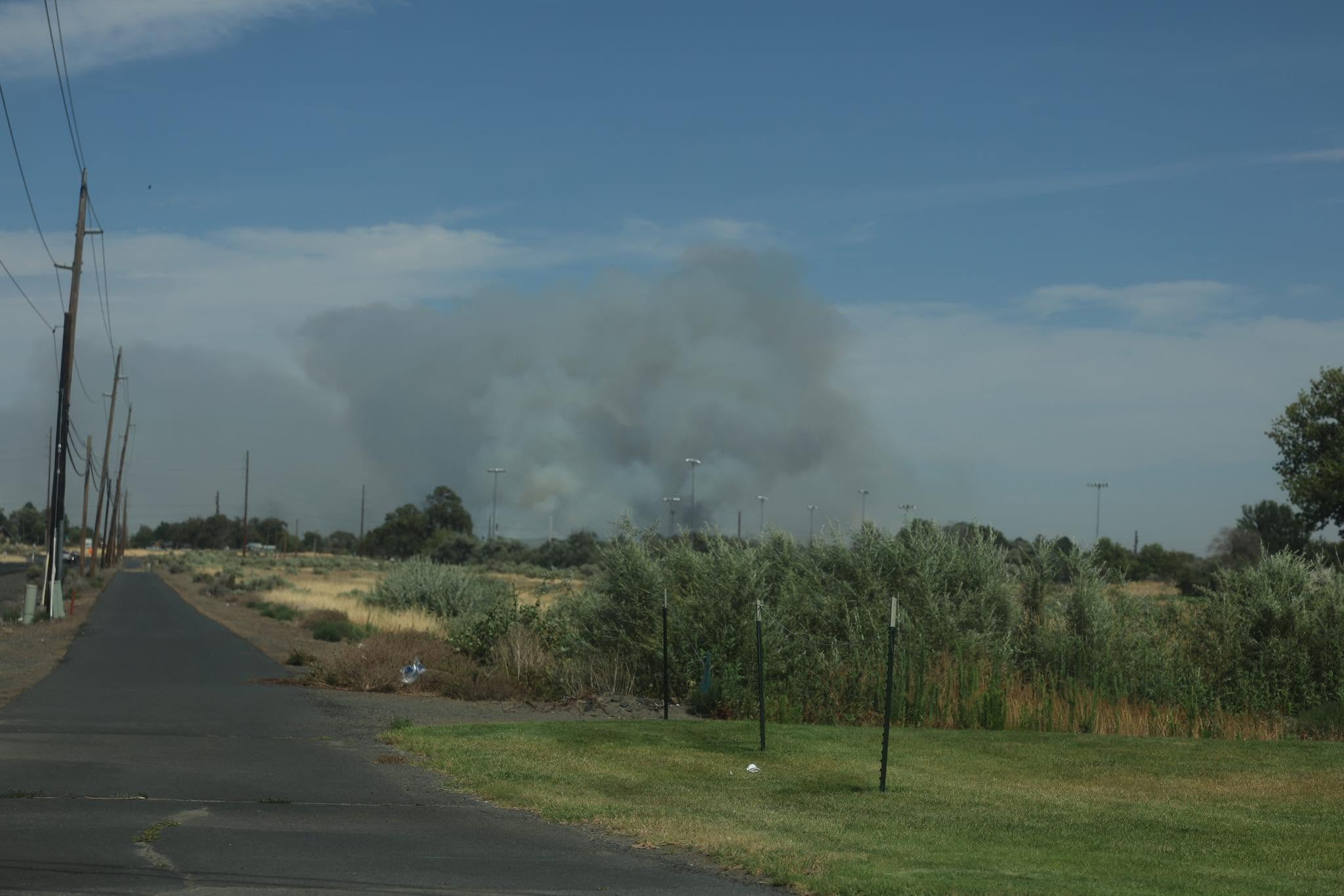Oregon faces ‘worst-worst’ case scenario as fire season approaches
Published 3:30 pm Wednesday, May 27, 2020

- Oregon National Guard soldiers learn the basics of wildland firefighting in 2015 at the Oregon Department of Public Safety Standards and Training center in Salem.
SALEM — Oregon has to prepare for a possible second spike of COVID-19 in the fall, fight wildfires while not spreading the infection to crews, and do it with budgets slashed by the state’s dire finances, lawmakers were told Wednesday.
The hearing by the House Interim Committee on Veterans and Emergency Preparedness was cast as a timeout for state agencies to tell legislators how they have dealt with the coronavirus pandemic and what they plan to do going forward.
What specific equipment, training and planning do state agencies need as “we find the time to put Humpty Dumpty back together again?” said Rep. Paul Evans, D-Monmouth, chair of the committee.
The committee cannot work on bills during the interim between sessions, but it can take testimony to help shape future legislation. Though the 2021 session doesn’t start until January, Gov. Kate Brown is expected to call a special session within the next few months to deal with a projected shortfall of nearly $3 billion due to cratering state revenues caused by thousands of closed businesses and mass layoffs that resulted from shutting the state down to try and suppress the spread of the deadly virus that has killed more than 100,000 people in the United States since February.
Brown has asked state agencies to come up with a plan to cut 17% of their current budgets. It’s a baseline for discussions with the Legislature on how to save some areas from the chopping block, while deepening cuts in other areas or increasing revenue. The result would be hammered out when Brown calls on lawmakers to return to Salem to deal with the crisis.
Evans said he has no timetable for when that might be.
“I don’t know when and if there will be a special session,” Evans said.
Andrew Phelps, Director of the Oregon Office of Emergency Management, said the coronavirus was the longest, biggest and most expensive disaster in state history. Because the pandemic hit every state and almost every nation, the usual network of shared resources between governments collapsed under the unprecedented demand.
Phelps said that even if a vaccine is found within the next year, the recovery from the damage wrought on the health and economy of the state will likely last through the end of the decade.
“Hopefully this is a once-in-a-lifetime event,” he said. “This will be the largest natural disaster to hit Oregon by a factor of 10.”
The virus will still be circulating through the state population as the summer fire season starts.
Doug Grafe, fire protection chief of the Oregon Department of Forestry, said COVID-19 was shaping the way the state will fight blazes. The key will be early fire suppression to hold down the number of crews that have to be deployed.
“We have to be aggressive on the initial attack,” Grafe said. “We have to keep large fires off the landscape.”
Grafe said that likely won’t be easy with about 90% of the state in drought condition and a hot summer forecasted.
Smokey conditions, like in past summers, would aggravate the breathing problems of those who are struggling with COVID-19’s attack on their lungs.
Rep. Kim Wallen, R-Medford, asked Grafe about any disconnect between the state and the U.S. Forest Service, which in the past has allowed fires deep in the wilderness to burn unchallenged.
Grafe said federal officials agreed that there would be no watch-and-wait approach this year.
“That is not a policy choice they are willing to make because of the COVID situation,” Grafe said.
While officials will try to limit the infection from spreading by changing the way firefighters set up camp and keeping a tighter limit on who can come into a command center, the bottom line is that crews will not be held back if they are needed.
“We’re ready to respond,” said Jim Walker, Oregon State Fire Marshal. “I’m not sure we will know the finish line until we get a vaccine.”
The Oregon National Guard will supply firefighting teams, but won’t be able to send in its CH-47 Chinook helicopters, which can dump up to 1,500 pounds of fire retardant at a time. They have been deployed overseas with 1,600 guard members mobilized to serve in U.S. Army anti-terrorism operations in 10 different countries around the horn of Africa. So have Chinooks based in Washington state. Oregon National Guard officials have made inquiries about obtaining the twin-rotor heavy helicopters from the East Coast if necessary. While the first units will start returning to the state next month, the helicopters are not scheduled to return until next year.
“They will be back in time for the 2021 fire season,” said Dave Stuckey, deputy director of the Oregon Military Department.
This year, the state will have to depend on HH-60M Blackhawk helicopters, which can carry 520 pounds of retardant per trip. Forest Service and civilian contracted firefighting aircraft are also going to be involved in stopping any major fire.
Stuckey said that troops returning from deployment overseas will spend two weeks in quarantine at a training facility in the U.S. as a precaution against spreading COVID-19 before they are allowed to come back to their hometowns.
Brian Young, president of the Oregon Emergency Management Association, which represents local response forces around the state, said the possibility of a pandemic has always existed, but most of the regional emergency management scenarios were geared toward floods, fires and, at the top of the list, earthquakes.
“A year ago we were talking about Cascadia and about what that would do to the region,” he said.
Young called for a better integration between federal, state and local emergency responses. Not for a future disaster, but for the one ongoing right now.
“This is more like a pause in the middle of the game,” Young said. “Take a high overview of the lessons learned.”
Young said that a bigger and better cache of items needed by first responders and medical providers needed for the pandemic was a top priority. The breakdown of supply chains early in this year’s crisis led to shortages of face masks and other personal protective equipment (PPE), with panic buying of what little equipment became available.
Evans agreed that the scramble of sometimes competing agencies made a cohesive effort difficult to build and maintain.
“Emergency management can be like herding cats,” he said. “Disasters are won or lost on a local level.”
Rep. Jack Zika, R-Redmond, a committee member, said that any solution to the PPE shortage had to include how to ensure that local doctors, dentists and others aren’t forgotten. Many contributed their masks and other equipment to emergency medical personnel caught in the shortage. They need their supplies to be replenished to survive.
“If hospitals are having a hard time, how do any of these other businesses even have a chance?” Zika said.
Akiko Saito, director of emergency operations for the Oregon Health Authority, said the agency was simultaneously trying to figure out the short-term response to the pandemic and what a mid-term, non-emergency response will look like before a vaccine is found.
“We have to watch and make sure we can guard against a rebound of the virus,” she said. “We’re preparing for a possible second wave in the fall.”
Saito said protecting public health, back-to-school scenarios for children, and other issues were playing out against a backdrop of state financial austerity that isn’t likely to go away any time soon.
“We’re planning for the long term,” she said. “What does the new normal look like?”
Evans called on those who testified to come back to the committee with very specific requests of what they have to have going forward into the next phase of fighting the coronavirus and wildfires.
“I need to know what a worst case and a worst-worst case is in the fall so we can push for PPE, ventilators now,” he said.
Evans said he would fight for supplies before the Joint Ways & Means Committee, the Legislature’s top financial panel, which would fashion a legislative response to fill the budget gap during a special session.
“I want to be able to beat the hell out of folks so that we get that equipment,” Evans said.
Otherwise, the same high demand amid limited supply will happen all over again.
“The public understands once,” Evans said. “They won’t understand a second time.”









